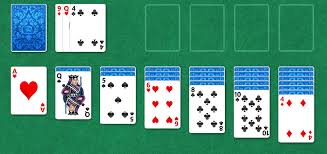
Exploring the Many Types of Solitaire
Solitaire, a timeless classic in the card game world, has been a source of entertainment for card enthusiasts for centuries. While many people might associate Solitaire with the iconic version preloaded on Windows computers, the truth is there’s an expansive world of Solitaire variations, each offering its own unique challenges and strategies. This article delves into the diverse realm of Solitaire, highlighting the different types and what sets each one apart.
1. Klondike Solitaire
The most recognized form of Solitaire, Klondike, is what most people refer to when they think of Solitaire. Played with a standard 52-card deck, the objective is to move all cards to foundation piles, organized by suit in ascending order. Strategies involve maneuvering cards in the tableau by placing them in descending sequences of alternating colors.
2. Spider Solitaire
Another version that gained immense popularity thanks to Windows is Spider Solitaire. It’s played with two decks (104 cards) and is considerably more challenging than Klondike. The game involves ten tableau columns, and the objective is to arrange cards in descending runs from King to Ace of the same suit, which are then automatically moved to a foundation.
3. FreeCell Solitaire
FreeCell distinguishes itself by having almost all games be winnable, making it more strategy-based than luck-based. The game uses a single deck, with all cards dealt into eight tableau piles. Four FreeCell spots and four foundation piles are available. The goal is to move all cards to the foundation piles using the limited free spaces as strategic placeholders.
4. Pyramid Solitaire
In Pyramid Solitaire, cards are arranged in a pyramid shape. The objective is to remove pairs of cards that add up to 13 (with Kings being removed singly) until the pyramid is entirely cleared. The game demands keen foresight to ensure all cards are playable.
5. Tri-Peaks (or Three Peaks) Solitaire
Tri-Peaks has a layout of three pyramids. Cards are removed in a manner similar to Pyramid Solitaire, but in ascending or descending order, regardless of suit. The game’s objective is to clear all cards in the tableau and the deck, ensuring that large sequences can be combined to rack up points.
6. Golf Solitaire
In this variation, the tableau consists of seven columns with five cards each, while the rest form a draw pile. The aim is to transfer cards from the tableau to the foundation, but only if they’re a rank higher or lower than the current top card of the foundation, regardless of suit or color.
7. Yukon Solitaire
Yukon bears a resemblance to Klondike but comes with a twist: there’s no stock; all cards are dealt into the tableau, with some remaining face down. The difference lies in moving stacks of cards without paying attention to sequence, making the gameplay more dynamic and strategic.
8. Canfield Solitaire
Originally a casino game, Canfield is another variant that’s quite challenging. Its tableau consists of a single card in the foundation, four tableau piles (with the leftmost having the most cards), a reserve pile, and a stock. Players aim to move all cards to the foundation, building them up in ascending order by suit.
9. Forty Thieves
Played with two decks, Forty Thieves presents players with ten tableau columns, each starting with four cards. The game’s difficulty lies in the limited moves allowed: only one card can be moved at a time, and tableau columns are built in descending order by suit, not just by alternating color.
10. Baker’s Dozen
In this type, all 52 cards are dealt face up into 13 columns of four cards each. The Kings are placed in the first four columns, and the objective is to build the tableau columns down by suit.
11. Scorpion Solitaire
A close cousin of Spider Solitaire, Scorpion is played with a single deck. The cards are dealt into seven tableau columns, with the first four columns receiving seven cards each and the others six. Unlike Spider, there is no stock in Scorpion. The goal remains to build from King to Ace in the tableau, but the movement rules differ, adding a layer of complexity.
12. Russian Solitaire
Much like Yukon, Russian Solitaire involves tableau columns built in descending order of the same suit. The primary challenge lies in the rule that only the sequences of the same suit can be moved between tableau columns, making it trickier than Yukon.
13. EastHaven or East Haven Solitaire
A variant of Klondike, EastHaven is played with two decks. 24 cards are dealt into seven tableau columns, and the game proceeds in a similar way to Klondike. The key difference lies in the moving of card sequences: in EastHaven, any card sequence can be moved, regardless of order or suit.
Conclusion
From its obscure origins to its modern digital renditions, Solitaire has proven to be a versatile and ever-evolving game. With countless variants that cater to every skill level and preference, it’s no wonder that Solitaire remains a beloved pastime for many. Whether you’re seeking a simple game of Klondike or the intricate challenges of Scorpion or Russian Solitaire, this timeless classic offers a world of strategy, patience, and endless entertainment.